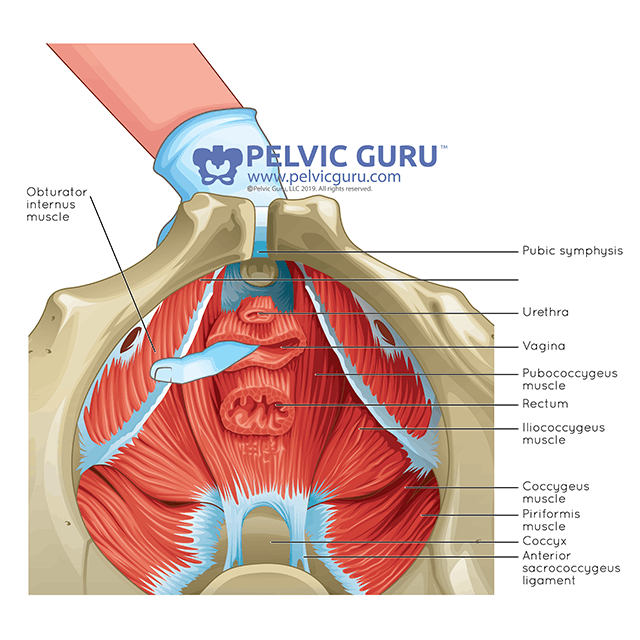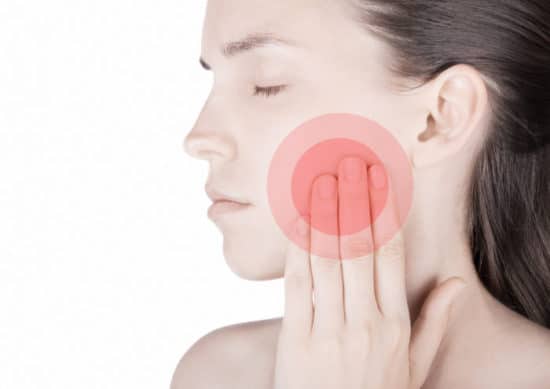The Missing Link: Hip Pain & Pelvic Floor

If you’re experiencing hip pain, a pelvic floor specialist may be able to help. You might be thinking, “What does my hip have to do with my pelvic floor?” First of all, the pelvic floor is directly connected to the muscles of the hip. The obturator internus (OI), one of six hip rotator muscles, attaches the hip to the pelvis via the pelvic floor musculature (PFM). The muscles of your pelvic floor span your pelvis like a hammock, providing support for your pelvic organs and aiding in bowel, bladder, and sexual function. The PFM comprises part of the deep core, which functions to distribute and stabilize forces across the trunk and pelvis. Pain, dysfunction, and compensations can occur to create stability when muscle imbalances are present.

A Deep Stabilizer
The hip joint is a ball and socket joint. The ball-shaped end of the femur (the long bone in the upper leg) fits into a socket in the pelvic bone.The OI muscle originates deep within the pelvis, where it winds its way outward to insert onto the head of the femur. Its primary job is to externally rotate the leg, but it also helps stabilize the leg during movement by keeping the head of the femur in the hip socket. It serves as an attachment for the pelvic floor muscles via fascia and ligaments and contains the pudendal nerve. The OI muscle can be evaluated during an internal pelvic exam (see picture above), typically performed by a trained pelvic floor specialist.
Hip Pain
Common Causes of Hip Pain
- Osteoarthritis
- Labral tears
- Hip impingement
- Tendonitis
- Bursitis
- Sports injuries
- Pelvic floor dysfunction
Hip pain can lead to pelvic floor dysfunction, as individuals will often create poor compensatory strategies for loading the hip to alleviate pain. This can inadvertently cause strain on the muscles of the pelvic floor, which can result in a number of pelvic symptoms, like incontinence or pain with intercourse. Therefore, hip pain should be evaluated and treated without delay to avoid further injury.
Hip Pain Treatment
Hip pain can often be managed through conservative interventions like physical therapy with successful outcomes, which include:
- Reduced pain
- Improved flexibility & motion in the back, hips, and pelvis
- Improved strength, balance, and walking
- Return to activities or sport
Physical therapists address dysfunctional movement patterns, muscle imbalances, and lifestyle habits that perpetuate pain. They develop individualized treatment plans based on the needs and lifestyle of their patients. However, traditional orthopedic therapists can sometimes overlook the involvement of PFM and OI in hip pathology, as they may lack specialty training.
Sources of Pain Are Not Always What They Seem
Although hip pain can be caused by a variety of pathologies, it can also be rooted in pelvic floor muscle dysfunction. OI muscle weakness or strain can be the primary driver of hip pain, but it could also be a secondary symptom. Pelvic floor dysfunction can mask hip related symptoms due to the close anatomical relationship. Pudendal nerve irritation can be provoked by OI muscle-fascial tension and can cause numbness, pain, burning, irritation or itching in the rectum, vaginal, perineal, penis, or clitoral regions.
OI Related Pelvic Symptoms
- Painful sitting
- Urinary urgency and frequency
- Urinary leakage
- Sexual dysfunction
OI Related Symptoms
- Deep hip or low back pain
- Pain lower abdomen groin
- Pain near the ‘sitz bones’
- Vaginal or rectal pain
Pelvic Physical Therapy Can Help
A pelvic physical therapist can perform an internal assessment of the OI muscle to determine if it is a primary factor in generating hip pain. A pelvic specialist can help restore mobility, stability, and function of the OI, pelvic floor, and other hip muscles. Addressing underlying muscle imbalances can help you get back to the activities you enjoy most, like playing with your kids, traveling, returning to sports, or having sex.
We can help!
This blog was created for informational purposes only and is not intended be a substitute for professional medical advice, diagnosis, or treatment. Always seek the advice of your physician or other qualified health provider with any questions you may have regarding a health condition or before beginning a new exercise routine.
Written By: Victoria Garrett, PT, DPT
References
- Pelvic Floor Dysfunction. (2020, March 31). Physiopedia. Retrieved 14:28, June 8, 2020 from https://www.physio-pedia.com/index.php?title=Pelvic_Floor_Dysfunction&oldid=234370.
- Obturator Internus. (2020, February 10). Physiopedia. Retrieved 14:29, June 11, 2020 from https://www.physio-pedia.com/index.php?title=Obturator_Internus&oldid=230399.







